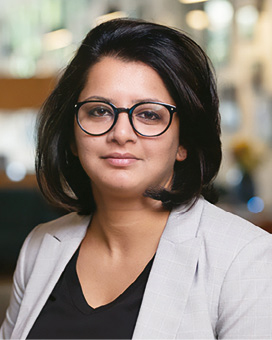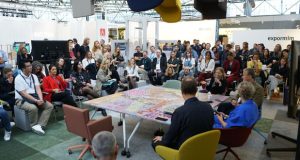Mitakshi Sirsi, Director of Sustainability, Broadway Malyan (pictured left) and William Poole-Wilson, Founder and Managing Director, WILL+Partners (pictured right) discuss how the construction industry and architecture & design firms can help improve sustainable outcomes in the built environment
This article was born when Will asked me “Why isn’t there an Earthshot prize* for the construction industry?” I was bemused, and possibly a bit cavalier because I was concerned about a deadline and realised this was not going to be a short conversation. It was more likely headed towards a not unusual, excited exchange of ideas and more existential than the long report I was writing. I asked him what he meant because the Earthshot prize addresses all industries and sectors, and I had my doubts about the whole point of the prize anyway.
This is a dialogue from our conversation which I hope sparks some interesting thoughts and ideas.
WP-W: Call it by whatever name you like. But consider this – for the past 25 or 30 years working in practice, architects and engineers have made major contributions towards sustainability and ESG in the built environment. A small consequence is that we finally have developers and occupiers on the stage talking about it, not the architects and engineers. We do not have another 30 years to try to get more of the world to get on board, and not just talk about it but support the work we do in practice.
MS: Do you mean research, such as funding for academics? I know about some useful investment in aspects such as the performance gap, integrated project insurance model and decarbonising heat networks.
WP-W: I mean industry investment and contribution in Practice, given by the developers, and investors, even insurers, in that sense an Earthshot. We have had good technological research from Innovate UK, but I sometimes question if that has translated into practice, and if not, where the shortfalls are into making things work in reality and providing better outcomes. There just isn’t enough investment in practice to help us dig deep and work on the issues to improve processes and to innovate.
MS: You are right. Our work on the Health & Wellness in Offices was so elaborate, but we haven’t really attracted the time or resources to put it into practice – and imagine what leaps it would make if we did have the opportunity. I also know that you have spent a lot of time volunteering, and being the original author to help create sustainability systems such as SKA, and didn’t you also volunteer time to the RIBA sustainable communities project?
WP-W: Yes, and plenty of others too. The architecture and design community are excellent at volunteering our time to industry bodies and on educating clients, trying to bring people in practice together and making a difference. Have you considered that we spend so much of our time volunteering and helping clients with strategies, ensuring they have ESG strategies on the right path, help them get in line with investor expectations, especially with what impact investors require, knowing that there is a shortage of skillsets and experience needed to do the work, but then the investors swoop in and take all the credit? It’s all work and no pay!
MS: And in terms of innovation in materials and processes as well. For example, isn’t there enough evidence to indicate that CLT (cross-laminated timber) used in buildings can be more fire resistant than was earlier assumed? But they aren’t built because insurers are holding their ground either by disputing the claims of research or have no willingness to work with practice to find solutions for a better environment. We can do so much with CLT if only we were able to build more with it!
WP-W: I was also reminded of the integrated project insurance model. Hasn’t that proven to work well to reduce the fear of liability and work in a no-blame culture?
MS: Yes, but using the model means educating clients and service providers, giving them the time and resources to understand why it will result in better and more outcome driven practices in sustainability. We do not have that. We have to keep working within the status quo, not because we don’t want to adopt innovative practices, but we don’t have the resources to. To think we are called the industry with the most inertia towards change. Similarly for operational performance of buildings.
WP-W: It is interesting you say that. We have created frameworks, processes and technology innovations that work. I think this is specifically about bringing resources in to fill that gap between the research and practice, by investing in the practice of the built environment.
MS: It is time for investors to come out of their silos and see that we need resources to do what they are asking us to do; generate positive social and environmental impact alongside a financial gain.
WP-W: Not just the investors, but anyone who is demanding better performance from us, but without the means to provide it – investors, developers, clients, insurers, and occupiers. They might think it is a big ask, but it is about time, don’t you think?






